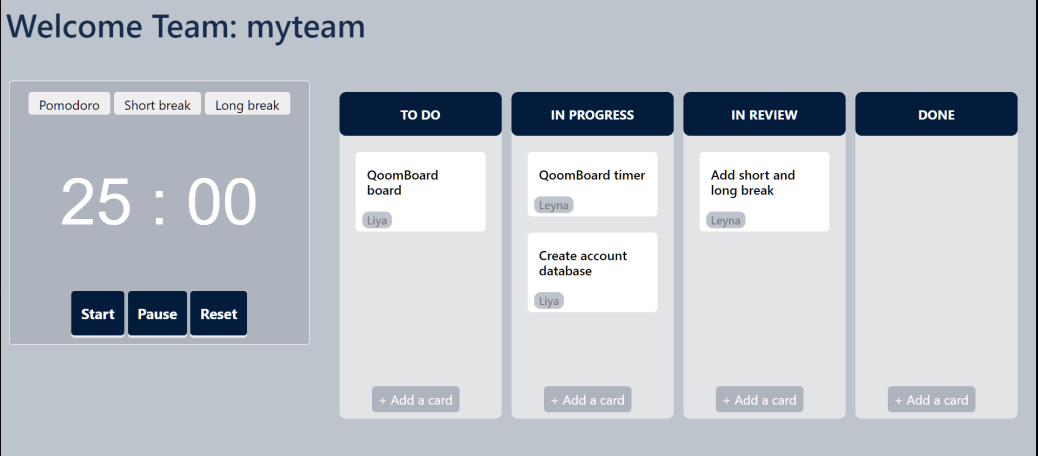The Creation of Qoomboard

The journey of creating QoomBoard, as being a part of the Qoom Creator Group with Leyna and Liya.
______________________
The time I had joined a new group with entirely new people I’ve never met before. We had no high expectations for each other except for sharing one goal: finishing the project before the deadline. The project consisted of many parts that had to be split among the group, so we started with a shared Google document. Time was short and it was the most efficient answer at the moment. We spent hours planning, coding, and reviewing the project for straight hours and barely getting the rest we needed. Thus, inspired our project Qoomboard.
Qoomboard is inspired by the combination of Kanban Boards (Trello) and various productivity platforms. Qoombaord is a collaborative productivity platform for a team of developers to optimize their time spent on coding. Many developers go through the struggle of working straight hours, without taking a break, which does more harm than good. Qoomboard has two key features: the collaborative Kanban Board to keep track of tasks assigned to each member in a more organized way and a pomodoro timer that helps keep an individual stay on track, maximizing their focus during pomodoro mode and providing a break, when necessary.
One of the biggest struggles we encountered while working with our project was working with the kanban board and being able to add cards, while being able to save it within the user’s account. For weeks, the cards would show up in the wrong category or they would disappear after the page was refreshed. Only the board and editing the cards was functioning at the moment and we would have to adjust small changes each week. After the introduction of Qoom’s databases during the tech talk, we found the solution to our problem.
The Account Database system, provided by Qoom, was the everything we needed to have our kanban board to start functioning fully. The combination of using the database and JavaScript Plugin that interfaced with the database (plus the help of Qoom office hours!), allowed the kanban function the way we wanted with the interchangeable cards to assign each member and which category it belonged to. In addition, the data was able to be saved to its assigned account the user has logged into, allowing them or their teammates to continue their progress anytime.
Check out Qoomboard!: